What's the biggest lesson you learned while landscaping?

Did you take on a landscaping project on your house? Hopefully, it turned out just as you wanted it to, but if not, what lessons did you learn along the way?
Share your experience! (photos encouraged)
Comments (96)
annnw3
6 years agoAs a first-time gardner, I've learned in 6 months that weeds grow faster and higher than the plants I paid good money for. Pulling them up is back-breaking and has to be done constantly (I'm trying to establish a habit of pulling a bucketful every morning). How come weeds can effortlessly push their way through the pea gravel and thrive, but plants (and all mine are local to the area) have to have holes dug, amended soil and an irrigation system!
Also, this week, I lost two favorite plants overnight to some hungry javelina. Now researching what plants to replace them with that are not tasty to any of the local wildlife. There's a lot of varied wildlife here so I expect the choices will be limited.
I'm not really grouchy about it all. It's fun to see something grow and to learn this new skill.
Judy Lambert
6 years agoDraw a plan of your property, including your outline of your house. Plan outdoor rooms including hardscapes so that as you move around each area you will open onto a new view. You don't have to do everything all at once. This was suggested to us many years ago and when we now look at that original plan we see that we have achieved all of it with the exception of putting in a garden shed instead of a greenhouse. We have a small yard however as we walk around the house, we have many vistas to enjoy, each one as enticing as the last. We developed many skills from planting to construction of pergolas, (some re-designed) to bricklaying, raised garden beds, (some re-designed), curved garden beds and ponds (some redesigned) and the latest, a little french garden with a fig tree in a very large pot! So you see-the beauty with gardens is that they can grow, change, evolve and inspire you! That turns the blood, sweat and tears - into the love of it! Enjoy your little corner of the world. We do!
Related Professionals
Commack Landscape Contractors · Lake Worth Landscape Contractors · Ashburn Decks, Patios & Outdoor Enclosures · Boise Decks, Patios & Outdoor Enclosures · Port Chester Furniture & Accessories · Euless Architects & Building Designers · Madison Heights Architects & Building Designers · Skokie Furniture & Accessories · Glenview Furniture & Accessories · Miami Beach Furniture & Accessories · Norwalk Furniture & Accessories · Hagerstown General Contractors · Pepper Pike General Contractors · Roseburg General Contractors · Syosset General Contractorsldmforruby
6 years agoTake photos - Lots!! I dug out landscape rocks, put in a French drain and redid the sprinkler lines before putting in new soil in our arizona zone 9b backyard. I took pictures of where the underground sprinkler head connections are located, where the ½” tubing runs and intersects, the drain layout, and especially important - where the electric wires for the irrigation system are located. Wach photo is associated with a fixed point ie part of the House, and rough distances. When clearing out the landscape rock in the tiny front yard by the mailbox, then all the construction debris (only 1’ down), I saw that the 1/2’ black tubing and wires for the sprinkler system ran through a pvc pipe under the driveway to the other side of the yard. I had no idea and it could have been a big problem if cut.
I have gone back to my photos several times over the past 12 years. They are well worth the time and also give you much needed encouragement when you’re stuck or discouraged
Also, mulch is wonderful and we used it extensively in our PA yard. But it doesn’t decompose well in zone 9b. Instead, after the monsoons, mushrooms (platter sized) create a crust around plants, like saliva, that you literally have to cut through - otherwise the plants start dying. And, as an added bonus, when you start digging you’ll see lots of white powder - mold. (Wear a mask...).
I hope that helps!!
I wish there was a happy medium between landscape rocks and mulch. (I hate rocks.).
Any hints?
einportlandor
6 years agoLandscaping is not an event, it's a process. Plants are living things -- they grow, they die, they thrive, they struggle. Don't be afraid to move plants that aren't doing well. Don't be afraid to dig them up and dispose of them, either. Add, subtract and prune every year.
Weeds will outlive us all. Don't disturb the soil unnecessarily. Plant ground covers. Mulch. Landscape fabric is a short term solution that you will live to regret. Weeds will find a way.
Trees first, shrubs second, vines/perennials/grasses/ground covers third.
Professional arborists are worth every penny if you have mature trees.
Before you start planting, consider how the garden will look from both inside and outside the house.
Nothing beats a comfortable seat under a shade tree for napping on a warm summer afternoon.
Forget perfection.
User
6 years agolast modified: 6 years agoIt all comes down to: Mother Nature Wins.
Every time you try to do something that works against Nature, like planting tomatoes in the shade, or bog plants in the desert, or tropical plants in Noth Dakota. Or a lawn anywhere. She will laugh at your efforts and actively thwart them. She is an equal opportunist for “weeds”
Remember that a “weed” is just a highly successful plant out of place in your world order. Not hers. She will favor the weed, because it is strong. The hybrid sickly rose is not. And she will win in the end. The fittest will survive.
The more you work against a natural ecosystem, the more work it is for you. Some people like challenges and the illusion that they have control. Those are people who spend a lot of time and money and are still thwarted.
Work with, not against. You cannot make water run uphill without mechanical intervention that will eventually fail. If you work with the natural tendency of water to run downhill, then that faux stream bed might eventually become a natural seasonal stream.
Mother Nature Wins.
einportlandor
6 years agoHere's another technique I've learned in 40+ years -- survival of the fittest gardening. Plant more of what thrives in your garden and get rid of the shy, the fussy, and the lame. It will simplify your life and give your garden continuity. When starting from scratch, consider planting two or three different ground covers and see which one is the best behaved. You know what to do next!
onewingstudio
6 years agoLow low maintenance is key! Rocks are good. I love rocks. Never use red mulch or crushed volcanic rock unless you live on a volcano. Never use dyed or painted gravel! Did I mention rocks? When re-creating natural "dry" riverbeds look at real riverbeds. Look at how the big rocks and the little rocks find their places. Vary the shape and size of the rock but not the type. Never plant spiky or thorny plants too near pathways or doorways. I also agree that polkadot planting is dopey. It looks chintzy and dated. Have a look at gabion walls for retaining hillsides and also for dividing spaces.
 Also, this is the most awesome hot tub ever!
Also, this is the most awesome hot tub ever!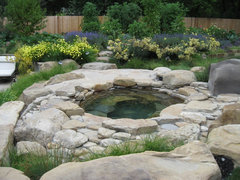
mdenton2014
6 years agolast modified: 6 years agoThings, specifically rodents, live in overgrowth. It’s better to clean it out slowly to give them time to relocate. Otherwise, you may have many uninvited house guests.
Also, I buy clearance, half dead plants. I’d say 97% of the time they pull out of it when they get in the ground. Nature takes over and brings them back to life. I try to only buy perennials in my zone. I find roses and mums all of the time for a dollar or less at the grocery store of all places. If they die, who cares? We have a lot of gardens with plenty of bees, butterflies, and birds so it seems to work okay.
Also, I almost never use mulch or fertilizer. When I do it’s sparingly. It seems to me most of our stuff does fine if I get it in the right spot. I keep an eye on everything and if it seems to still be struggling after about 3 weeks I relocate it. I used to worry about the plant going into shock or something, but, again, nature wants to survive so I let it do it’s thing.
A W
6 years agoLandscaper planted seven white pines on our property line to give privacy from our neighbors' pool. Needle drop makes a mess of their patio area and clogs their pool. Over the years the lower branches have died off creating lollipop trees with no privacy between yards. Under-plantings have not done well because the pines rob the soil of moisture and we also have a big deer population that eat everything.
Anne Duke
6 years agoIf a landscape architect is out of budget, do one heck of a lot of research, reading and in person, and follow your instincts. The so called pros sometimes aren't.
BeenAroundtheBlock
6 years agoI have done the landscape design at all five of the homes I have owned. 1st get familiar with the plants available in your area. #2 find the least expensive places to buy (farmer's market, WalMart, whatever) #3 decide on color theme that goes with your house...i.e. reds, yellows, dark, light greens, etc. #4 Decide on varying heights, vertical, horizontal........then go look around and see what fulfills those requirements. Look at beautiful landscapings in neighborhoods you like, hone your taste, chose the plantings you love. Buy a good landscaping book that gives the names of all the kinds of bushes that will work in your climate zone. Create a plan, think, revise, spend one house with a landscape designer to review your plan. Find reliable people to do the planting, prep is especially important. Expect to be hands on every minute of the process. Then as the years go by, ALWAYS be prepared to edit, edit, edit, especially in the South where things grow like weeds. Without editing, your landscape will eventually look dated.
User
6 years agoHands on is everything so that you come to intimately know your little piece of heaven; take lots of "before" photos so that you can reassure yourself that you've improved the property in the off season. Personally, I've shifted from artistically planted areas to broader swaths of native perennials, shrubs, etc. In fact, I've committed to replacing all failed plants with native plants. I enjoy the life and movement of butterflies, dragonflies, birds, and other pollinators so while my garden is less "artistically" planted, it supports so much life that I find enormous satisfaction in it. Finally, get great ergonomic tools and use them - protect your joints and your back, garden smart :-).
2beachlovers
6 years agoIt appears you are in CA? Buy a Sunset Western Garden Book (Home Depot, Lowe's, garden centers, online). Will give you a wealth of info about your garden zone (different from USDA zones) and ALL appropriate plants for your space. According to several certified arborist I know, never plant a tree larger than a 15 gallon size. They will be much hardier and healthier as time goes by. Prepare, prepare, prepare your soil. Know how much time you have to spend on maintenance and choose plants accordingly. Always allow plenty of room to grow. Make sure to locate plants with similar needs (e.g., water, fertilizer) together. Choose plants that combine to give you interest year-round. And like others say, it's a process. Have fun!
willozwisp
6 years agoI have also learned that where I plant a living thing, it may take umbrage at the location and die. Or else its seeds will find that perfect spot for itself and thrive. The plants know the temp, nutrients, moisture, sunlight and soil better than I ever will. I am just lucky and grateful that some of the plants have done well where I have decided they should go.
Milly Rey
6 years agolast modified: 6 years agoYou can't really PLAN a perennial border. You can...but only knowing that in 5 years it can have gone a very different direction.
And NOTHING is ever the size it says on the label.
If you have a bed 100 feet long, plan to plant A LOT of everything.
greenerpast
6 years agoMake your beds way deeper than the normal ones you see in front of homes- give the shrubs room to spread out so you won't constantly be trimming.
Pick your shrubs and plant the recommended distance apart- use colorful annuals to fill in the blank spaces for the first few years.
Any spot of open dirt in the garden will grow weeds- so cover it with either natural mulch or plants. Underplanting with a ground cover will simplify weeding, but it might overrun smaller plants.
Trim knockout roses with a hedge trimmer in late winter, after the big spring bloom, and again in late summer in warm climates for a fall bloom.
Rip out what looks terrible and is dying, even if you spent good money for it.
Make a paste of baking soda and water to take the sting out of fire ant bites.
Know what poison ivy or similar plants in your area look like, and take them out (with gloves) when small.
Use roundup as little as possible, and NEVER spray on a windy day.
Yardvaark
6 years agoWhatever the "biggest lesson" I've learned is I can't say because nothing in particular comes to mind. I feel more like I've learned bucketloads of small lessons. (When someone starts a thread along the lines of "the stupidest landscape mistakes you've ever made," or "what you did that made the boss really mad," I may have more contributions.) Anyway, I'll share a testimonial about one landscape design and layout tool that I've come to appreciate and adore, and that is upside down marking paint, and specifically, the long-handled wand with which it is applied. I sometimes see professionals using the short-handled, pistol-grip marking paint applicators and I think they are just ignorant. Not only is that method a back-killer. It's impossible to make good, fluid lines with it.
Why I love marking paint so much is because it extends the realm of design into the field. It is one of the absolute best/cheapest/fastest visualization tools ever devised. One draws something on a plan but may then wonder exactly how that's going to play out in reality. Draw its footprint on the ground and see. One can draw centerlines or perimeter lines. If necessary, these lines can be extended upward with stakes/rods, etc. One can see where something ends and what it would block out of view from a given viewpoint. Will that paved area be large enough? Draw it on the ground and explore it. Does that curve look right? Draw it on the ground. Should this stop here ... or there? Draw it. There is no end to utility of this cheap tool. I credit it with helping me transform from a theorist in a cubicle into someone who knows how it's really going to work out. (This, BTW, is all from a perspective of pre-CAD and never knowing CAD.)
Paint is $5 and the the long handled marking want could be picked up from Amazon or Ebay for about $20-25. One might say, "But I'm only going to use it this one time." I not only use it for every tiny construction project, but for ongoing maintenance, too. Need to trim some groundcover? Spray a nice fluid curve to the bed edge and cut off everything that has any paint on it. Then there is no need to be calculating one's correct position by constantly casting sidelong glances at the nearby landmarks in order to make sure you're on the track. Going to install edging or a mowing strip? Marking paint is the tool.
One can also transfer a plan that is on paper to the actual ground with paint. Measure and mark out reference points and then connect the dots with paint. It may take a short time of practice in order to make really good lines. The key is to mark out the beginning and ending points first. Mark out guide points for a curve. Position one's self at the starting and then instead of looking down at the line, look at the destination while walking toward it. The line will magically end up being good. (BTW, even though there is a wheel on the wand, don't use it. Float the wand a couple of inches about the ground.) If I'm speculating on a curve, I'll make a dashed line first, and as I refine it, I will make a solid line. Mistakes can usually be partially scrubbed out with the sole of one's shoe. If things get really messy, one can change to a different paint color.
Paint is also useful for spraying tools in bright dayglo colors so they can easily be found after you've tossed them into the lawn. Or marking things that you want to easily identify as your own.
bossyvossy
6 years agoIf is not like buying furniture for a house. You get sofa, chairs, coffee/end tables and, voila, you have a LR. It takes YEARS to have a landscape design where one plant is the focus while others take back stage. It takes YEARS for flowers, foliage, fruit, wood and hardscape to work together cohesively. Spending $$$$$ is no guarantee in landscape design that you’ll have a beautiful all seasons design.
nicole___
6 years agolast modified: 6 years ago1) Rescued plants on the discount rack will come back & reward U for saving them..
2) Free mulch from the city looks natural, no additives, it's better than dyed crap U buy
3) Free CL flagstone, iris, hen & chicks. is keeping the landfills free of usable materials and will look great in MY xeriscaped garden!
4) Watch the utube video "before" laying the gravel and flagstone path. I didn't raise this path up w/ sand, it's too low, it will fill full of dirt over time. This could have been avoided. Learn from my mistake.

granmajb
6 years ago22 years of moving from pillar to post as determined by the USAF---every imaginable kind of soil and climate in more than one country, this is what I learned: look at what thrives in the countryside as well as your neighbor's yard. Never amended the soil, if the seeds grow in the wild, they'll grow in your yard. As a designer, I spent more time on the layout than digging holes, then planted, maybe a little fertilizer and some water. Everything grew just fine (including the weeds, and we did keep those pulled). Right on, "onewingstudio" we loved rocks and building retaining walls so stuff could fall over the edges. Buy annuals at the big box stores but buy perennials from a local nursery, they don't carry stuff that is better planted in a different climate than where you are. Three years ago, now alone, I cleared a 14 x 16 ft. space, digging out field grass that had been there at least 50 years, built walls of decorative concrete in meandering layers to a rise of 5' so my daughter could have a tiered garden around her hot tub. Then dug a pond for goldfish--9 x 12 x 4 ft. deep, laid stones around, created a waterfall and planted ground covers, Blue Fescue and a small decorative tree. Added 7 goldfish called feeders from the local pet store. Today the plants are beautiful, hardly any weeds, lots of moss and those goldfish have become a large family of at least 30---who knew? My daughter's garden is thriving, the Blue Star Creeper has cascaded over the walls and Rhodies, Azaleas and small flowering plants look great. Did I mention that I am a widow, just turned 88, am 4'11" tall, and have never bothered to have gym membership?? One thing I did learn, however, I'm not going to do it again, but it was fun while I was able.
carlottadarrell
6 years agoNever ending. Success is measured by growth and that leads to more work. There is something to be said for the "concrete" jungle.
User
6 years agolast modified: 6 years agoIf hiring professionals ; ensure they offer a reasonable warranty on what they provide. For example; in my case two trees died a year later and were readily replaced without cost. Also three years later one retaining wall caved in and was quickly dismantled and rebuilt; again without any additional cost.
Footnote: The warranty was for five years and the landscaping was very extensive. I live in an area where our climate can be brutal particularly during the winter months which I feel had a bearing on the two issues I mentioned.
cwo2rm
6 years agoDon't plant Vincas! OMG! I've worked for almost 4 years to eliminate the vincas planted by previous owners of my home! They seem to be immune to everything and keep coming back. They are extremely invasive so be sure to properly investigate whatever you want to plant paying particular attention to species that spread or are considered invasive.
cwo2rm
6 years agoOh, one other thought. Make good use of your local USDA extension offices for appropriate species for your area. Here in Florida, we are very fortunate to have the U of F agriculture operation for amazing information on plants appropriate for where ever you live in Florida. For example, if you live on one of the barrier islands, salt spray and residue is a major deterrent for many plant species. I suppose bottom line is make use of the free resources available to ensure you select the right one for your specific environment. Landscaping or gardening is a lot of trial and error so don't be afraid to relocate your plants.
summersrhythm_z6a
6 years agolast modified: 6 years agoDon't grow too many monster plants, if you let them grow free, they'd eat your garden.......
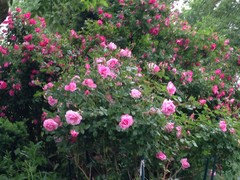
Michele Stott
6 years agoIf you hire a landscaper be wary of rented equipment sitting unused while you are being charged for it. Have the workers time sheet in and out and keep track of costs so you don’t run over. And, roses are easiest to maintain and last longest. Prep man your project based on how much you want to spend on water and how much time you want to spend maintaining your yard per week.gardengal48 (PNW Z8/9)
6 years ago"And, roses are easiest to maintain and last longest."
On which planet?? Roses - that is, most OGR's and hybrid forms - are extremely high maintenance plants!!
Nancy, that is a very honest and ofttime accurate assessment. That's why there are professionals :-))
Bonnie Kloos
6 years agoPlant trees! They take the longest to grow and mature so plant them early and often. Be careful where you plant them; take into consideration the size they will be in 10,20,40 years. Time goes by fast and before you know it, they're mature and beautiful!
Legends Landscaping
6 years agoPlanting a bunch of fruit trees will leave a bunch of flowers on your lawn that you'd have to continuously clean up... Be careful with them! http://www.legendslandscaping.com/
gardengal48 (PNW Z8/9)
6 years ago"Planting a bunch of fruit trees will leave a bunch of flowers on your lawn that you'd have to continuously clean up... Be careful with them! "
Really?? Spring flowering trees - often fruiting ones but just as many ornamentals - will drop their petals as the flowers age so that the lawn looks like it has a light dusting of white or pink snow. But they do not need to be cleaned up - they blow away or disappear on their own after a day to two.
Milly Rey
6 years agoWho on earth cleans up flower petals? The carpet of petals from shattered blooms is half the point! The Japanese cherry blossom festival celebrates the shattered bloom,not the bud!
Suzanne Granshaw
6 years agoWe are in the process of getting some landscaping done by a professional. My advice would be to make sure you get in writing how long from start to finish the job is going to take! He has been going on & off now since 21st Sept and not even close to finishing!

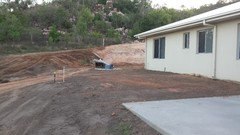
tqtqtbw
6 years agoFind out what is invasive and avoid it like the plague -- Mexican petunia has drained my time and available plant money as I have tried to kill this plant, once and for all in my yard. I got two little plants from a neighbor and have spent more than 10 years and so much money fighting its march around my back yard.
Jeff & Lee McCubbin
6 years agoRail Road Ties look neat.....for a while. They must be staggered and set back at least have the width of the one under it or they'll all come tumbling down. If you have them and some are beginning to rot or split, use that split for annuals to dress them up but never a perrenial because the roots will break them apart faster. Tip....save some money so you can buy landscape blocks when the ties rot out....blocks too need staggered and set back on row below.
Melinda Kenney
6 years agoLandscaping is a physically hard and sometimes challenging endeavor. Lots of bending, hauling and balancing! Soil is heavy, so are pots with soil in them. The ground isn't always flat. Roots don't always cooperate and wear protective eyewear around anything with a branch or thorns. And, you will do more hard-scaping than planting. Experience is a great teacher!
Gardening is a wonderful hobby and it's satisfying to see your hard work pay off with a gorgeous yard.Jenn TheCaLLisComingFromInsideTheHouse
6 years agoRun away from English ivy, if it's been planted and comes with the house be prepared to keep an eye (and be ready to pull up or cut back) on it so it doesn't take over the entire landscape. In our prior home the English ivy planted at least 50 yards away in the common area quickly expanded its reach; covering basketball size and larger rocks, smothering smaller plants, and even hid a tree stump 2 feet tall, also climbing up the trunks of other trees. It took forever to just clear it out of the beds around the patio, and required me to be constantly vigilant to keep the new growth from sneaking its way back in.
Also, if you need help, there are plenty of decent sources but you have to *ask* instead of expecting the universe to read your mind and send them to you. :P
trinityofsix83
6 years agoPlan and research. Don’t rush the process, figure out sun and wind direction, are children a factor ( open space for them-space for you to relax-divide yard accordingly) Plant trees first , are you fencing? Do your hardscape - patio, walkways, driveway, deck. Pricing for hardscape has skyrocketed over the passed 20yrs. Then plant flowers, veggie patch, grass after
gregobah
6 years ago1. Don’t plant Sycamore trees (or London planetrees or any variety). They grow fast and provide shade but they dribble leaves throughout the summer and into the winter creating such a leafy mess. My Maple trees hold their leaves all year long till one week in November they drop them all in just a few days, cleanup done.
2. Don’t plant trees too close together or too close to the house. It will make you sad to have to cut them down when they get big and choke each other or bump up against the house.gardengal48 (PNW Z8/9)
6 years agoI'm not sure how relevant specifics of plant selection are to this discussion. It is the least significant portion of any landscape design, as there are inevitably multiple choices of plants to fit any need/requirement, location or growing condition. What works for one gardener/landscaper in one area may not work as well for another and vice versa.
There is SO much more to landscaping than just selecting plants and that tends to get overlooked by those who are new to the process :-) Don't confuse 'landscaping' with 'gardening' - there is a big difference!
Jenn TheCaLLisComingFromInsideTheHouse
6 years agoA lot of areas consider plants like English ivy to be invasive, some have banned their sale at nurseries. So I suppose one could modify specifics to the more general - AVOID INVASIVES. If you don’t know what is invasive to your region, google.
User
6 years agoWhen planting small fir trees look to see there isn’t a tarantula in the soil before you smoosh the dirt with bare hands.
Bestazy James
6 years agolast modified: 6 years agoMy main lesson is:
Know when you need help and do not be ashamed to ask for it. I admit, initially I found having to hire someone to be a bit demoralizing. As someone who takes great pride in doing all of my own gardening and landscaping, it took a bit out of me to realize I could not transform my front yard 100% on my own. Due to my status as a single working mother of three, a super busy schedule the month I wanted to tackle my landscaping, and a physical ailment that restricts my free movement at times, calling in back up was the right thing to do. By doing so, I knew I’d get my flower bed looking the way I wanted quickly and with less mental stress and possible physical ailment.
best regard
California Natural Pools
6 years agoWork with the land not against it! Choose designs including plants and hardscape
that are native to your area for a greater chance at success and harmony.I am a professional designing and building Natural Swimming
Pools and happened upon this while working with my own sterile pool and drought
challenged yard.
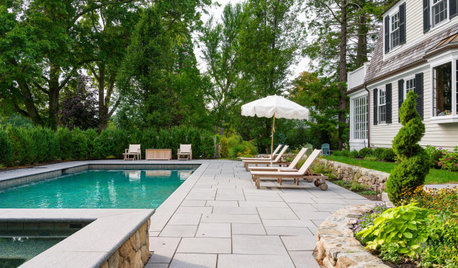
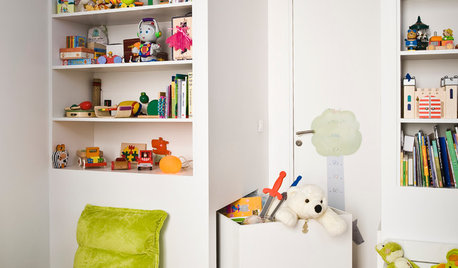
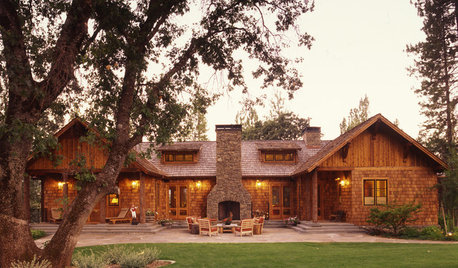

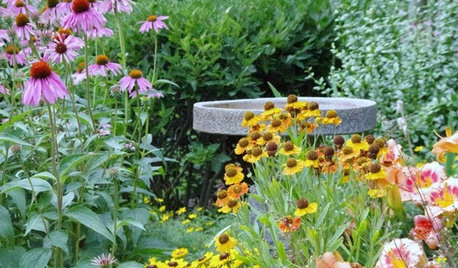

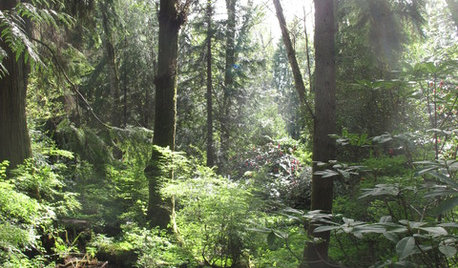


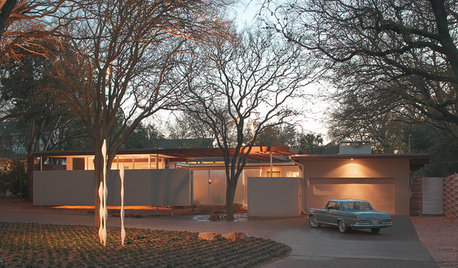







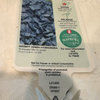

littlebug zone 5 Missouri